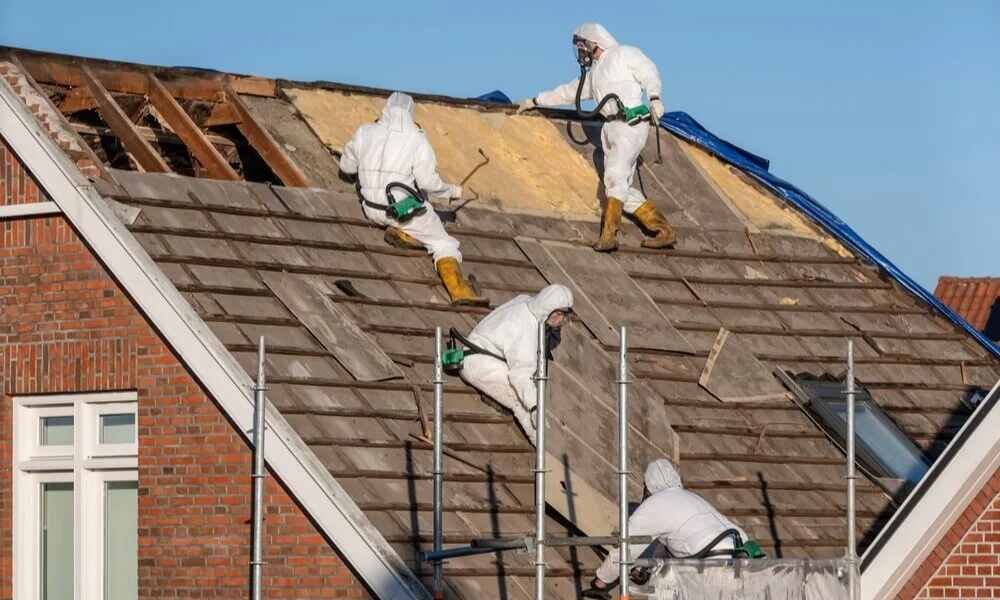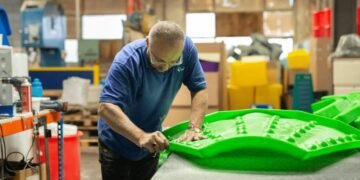Many people enjoy home improvement tasks and tackle projects themselves, allowing for creativity and personal expression in a home. Before beginning any home improvement project, consider one of the biggest dangers to your health to provide a safe environment for yourself, your family, and any workers participating in the project.
Properly using tools to avoid injuries, practicing safety in high places, and being aware of the dangers of electricity are ways to prevent immediate personal hazards. But consider long-term threats, like asbestos exposure, to prevent significant harm to the health of your lungs. Asbestos is a natural mineral used in producing many household materials, particularly those produced before 1989, because of its affordability and flame-retardant qualities.
However, it was determined that its use was harmful, and any exposure to asbestos fibers is unsafe, with the damage to your health frequently appearing decades after the exposure.
Test for Asbestos
The most sure method for asbestos-free home improvements is to test for the presence of asbestos. Some companies specialize in asbestos testing, while others work strictly in asbestos removal. Working with asbestos professionals is the guaranteed safest method of addressing asbestos.
Collecting samples for asbestos testing on your own is never recommended, but if you decide to proceed, become educated on asbestos and safe handling procedures. Materials remaining in the home should be left as undisturbed as possible. Following government guidelines for the safe collection and testing of materials is recommended.
Be Aware of Asbestos Exposure Potential
Asbestos is found in many products that exist in your home. Its use is more limited now, but it is still used in some products. Take precautions before:
- Removing old carpet and tile
- Replacing roof tiles
- Removing old plumbing
- Sanding, drilling, or sawing on older materials such as cement board, textured ceilings, and walls
Asbestos fibers are tiny, so you won’t visibly see them in the air. Practice safety using proper personal protective equipment (PPE) when performing any activity.
- Use caution operating tools that create airborne dust that may potentially contain asbestos.
- Dust using a wet cloth to capture dirt particles.
- Mop tiled floors instead of sweeping.
- Keep work clothes and shoes outside. If you think you have experienced accidental asbestos exposure, remove your clothing and place them in an airtight container.
Removal Requires Caution
Any home improvement project has the potential to expose a worker to asbestos. Asbestos exposure becomes a safety hazard in the demolition process. Removing old materials breaks them apart. This breaking, tearing, crushing, or cracking creates the danger of producing asbestos particles.
Even after removing old materials, glue, adhesive, and caulk residues carry the potential for asbestos exposure. If asbestos is found in your home and local laws do not require it, removal is often the last option because it poses the most risk of causing asbestos fibers to be released.
If you have extensive areas of damage in your home containing asbestos that cannot be repaired, work with specialists to remove the asbestos to decrease the potential of adverse risks from improper removal.
Repairing Asbestos Material
When repairs are an option, this is recommended to protect your family from additional exposure. Sealing is a repair that allows for the encapsulation of asbestos fibers to prevent their release, and covering uses material to enclose asbestos-containing fibers.
Replacing Old Materials to Eliminate Asbestos
Unfortunately, buying new materials does not ensure they are asbestos free. We live in a global society with the importation of products worldwide, and safety standards are not the same in every country. Even products produced today in the United States can still incorporate small amounts of asbestos.
Additionally, products containing asbestos are rarely labeled. Only products containing specific amounts of asbestos by weight require labeling. And no labeling is required when asbestos fibers are fixed in place without the foreseeable potential of releasing the particles.
Additional Safety Considerations
Keep children out of construction areas to reduce the further risk of asbestos spread and exposure. Children are prone to touching surfaces. Keep construction areas off-limits until cleaning has taken place.
Pets love to be close but restrict their access to areas of your home where work occurs for your safety and theirs. Fur is a great collector of dust and particles. These particles are distributed as pets travel through your home, lie on beds and couches, or enjoy a head rub or an ear scratch.
Wrapping Up
Seal off construction areas to limit the potential spread of asbestos fibers to other parts of your home. Overall, this creates a cleaner work environment. Everyone experiences some form of asbestos exposure in life, but minimizing these incidents reduces your risk of developing an asbestos-related disease. Taking these precautions when performing home improvements protects the health and well-being of your family.
Recommended Posts:














